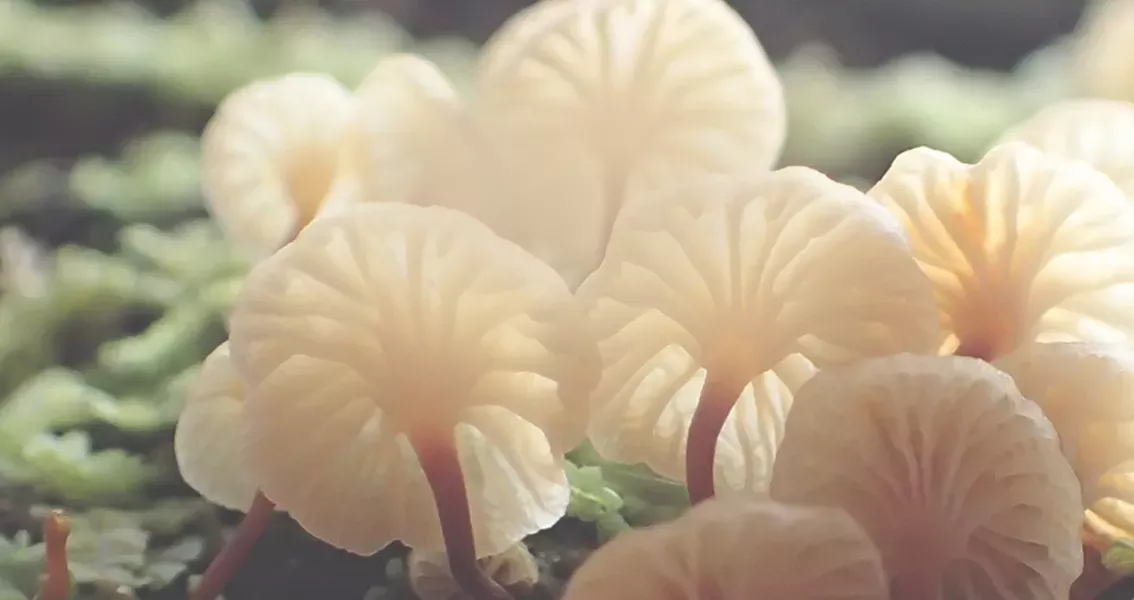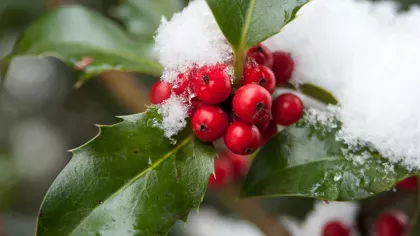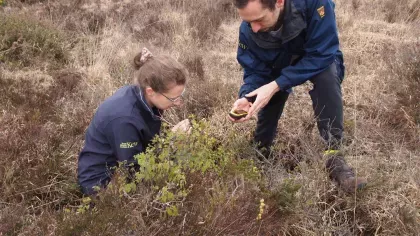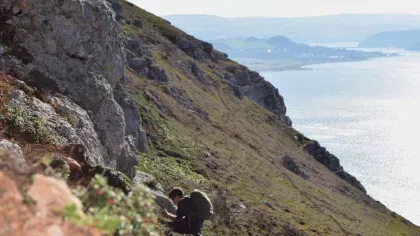4 February 2020
Up hill and down dale: Searching for elusive trees
Ancient woodlands are special, supporting plants, fungi and animals. But just 2 per cent of the UK is ancient woodland so securing tree seeds is crucial.

I sometimes think my job of collecting seed from native tree species would have been somewhat easier in the millennia that followed the last ice age, when trees dominated the British Isles.
Since then native woodland coverage in the UK has decreased, often rapidly during periods of technological advancement like The Bronze Age. In the past two centuries, more land has been turned over to agriculture and timber production, decreasing woodland coverage further.
Coverage in the UK is now amongst the lowest in Europe. Of this woodland, only 2 per cent is ancient woodland (meaning continuously wooded since 1600 in England, Wales and Northern Ireland and 1750 in Scotland).
These woodlands support complex communities of plants, animals and fungi and are the target sites for the UK National Tree Seed Project to collect seed.
Trees within ancient woodland are more likely to have local adaptations to prevailing conditions and less likely to be planted.
With such little woodland to choose from I hope you can sympathise with my nostalgia for a bygone era of wooded expanse.

The elusive species
The UK National Tree Seed Project was initiated in 2013 with the ambitious target to collect and bank seed from the UK’s native trees and shrubs – securing the genetic diversity of this important group of plants.
While some of these species have been easier to secure, some have proved somewhat more difficult.
These elusive species include ancient woodland indicator species: wild service (Torminalis glaberrima formerly Sorbus torminalis), midland hawthorn (Crataegus laevigata) and large-leaved lime (Tilia platyphyllos).
Another is black poplar (Populus nigra subsp. betulifolia), a riparian tree species.
All four species would have once been more common in the UK but for a variety of reasons, notably loss of habitat, have become scarcer in recent times.
Flooring, fruits and cider
These four native trees continue to provide important ecological functions but have seemingly lost their importance to people.
Wood from lime trees, soft and lacking grain, was a favourite of carvers across Europe and fine decorative pieces adorn the interiors of St Paul’s Cathedral and Hampton court Palace.
Black poplar once prized for its springiness was used in cartwheels, clogs and flooring until it was usurped by imported poplar, reducing demand for the native tree and adding to its demise.
Although the timber of wild service was voted the most beautiful in the world at the 1900 Paris World Exhibition, the trees' fruits arguably have more cultural significance in the UK.
Chequers Inn’s historically got their name from the alcoholic cider-like drink “Chequers” made from the fermented wild service fruits.

Securing seeds
Regrettably, the value of these native trees has not halted their decline.
Seedlings of black poplar, one of the UK’s most endangered trees, does not establish in heavily modified river systems.
Its gene pool is further depleted through hybridisation with imported non-native poplar. It is estimated that only 6000 true individuals are left in the UK and, of these, just 600 are female.
For this reason, the seed collection made this year from a population of both male and female trees is of great value.
Another valuable collection is that of large-leaved lime from ancient woodland in Shropshire, scarcer than it’s small leaved relative it has proved difficult to collect from due to seed production being dependant on warm early summer temperatures.
Our tree climbing team at Wakehurst battled their way to top of the canopy, where viable seed is retained, to make an impressive seed collection.
We also made important collections of wild service and midland hawthorn this year which will be safely stored and monitored at the Millennium Seed Bank, secure from future threats.
These collections represent only a small part of the collection effort this year by Kew and various partner organisations to who we are extremely grateful.
So let’s raise a glass of “chequers” to the conservation of the UK’s more elusive trees.


Acknowledgments
The UK National Tree project is funded by players of People's Postcode Lottery.

References
Cottrell. J. (2004). Conservation of Black Poplar (Populus nigra L.). Forest Research. FCIN57
Forestry Commission England (2015). So, you own a woodland? Chapter 7, A Brief History of Woodlands.
Sussex Wildlife Trust (2013). Helping our Rarest Native timber Tree, the Black Poplar.
Thomas, P.A. (2017). Biological Flora of the British Isles: Sorbus torminalis. Journal of Ecology, 105: 1806-1831.
Woodland Trust (2017), Ancient Woodland Position Statement.




